Dress for excess: designers embrace post-lockdown hedonism | Australian fashion
Jordan Gogos is doing the most. The 27-year-old multi-hyphenate is bouncing across a cluttered room in Powerhouse Museum’s Ultimo workshop. From overflowing boxes of offcut denim to hat sculptures in the shape of birds (made from retrieved ocean fishnets), he shows off everything with equal enthusiasm.
“What do you do before you go to a club?” he says. “You smack together! You cut your T-shirt up before you go out, you make this thing, say, ‘That’s kind of cool.’ I guess what we’re doing: we’re smacking things together.”
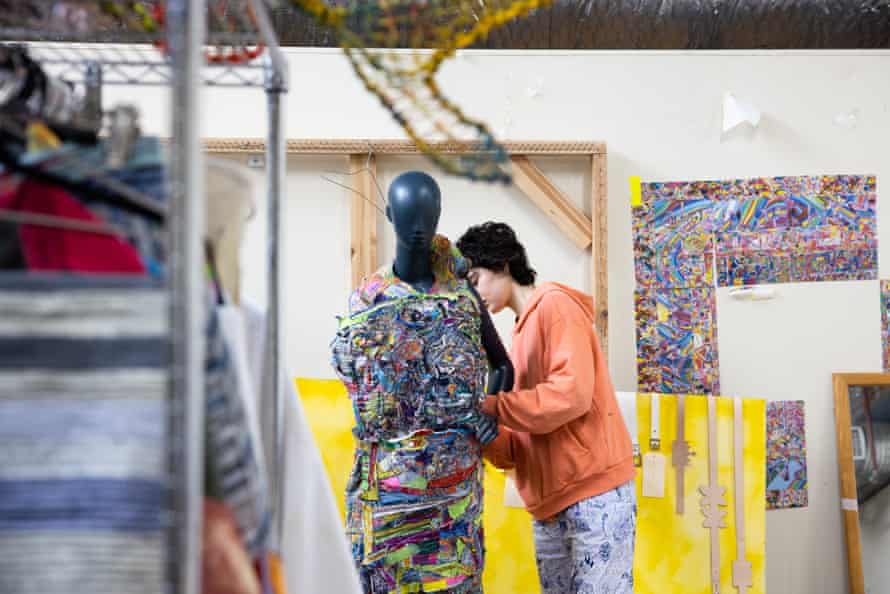
When we talk, he is two weeks away from his second Australian fashion week show under the label Iordanes Spyridon Gogos, which will take place on 12 May.
His first fashion week outing in 2021 was one of the season’s most talked-about collections, a mixture of paper-mâché, technicolour corsets and witch’s hats, all made from recycled and repurposed materials. Gogos’s background is in industrial design, but the show was made with a large team of collaborators. Some garments, made in lockdown-induced free time, took as long as 10 weeks to construct. It was an act of pure spectacle – none of the clothing on show was for sale.
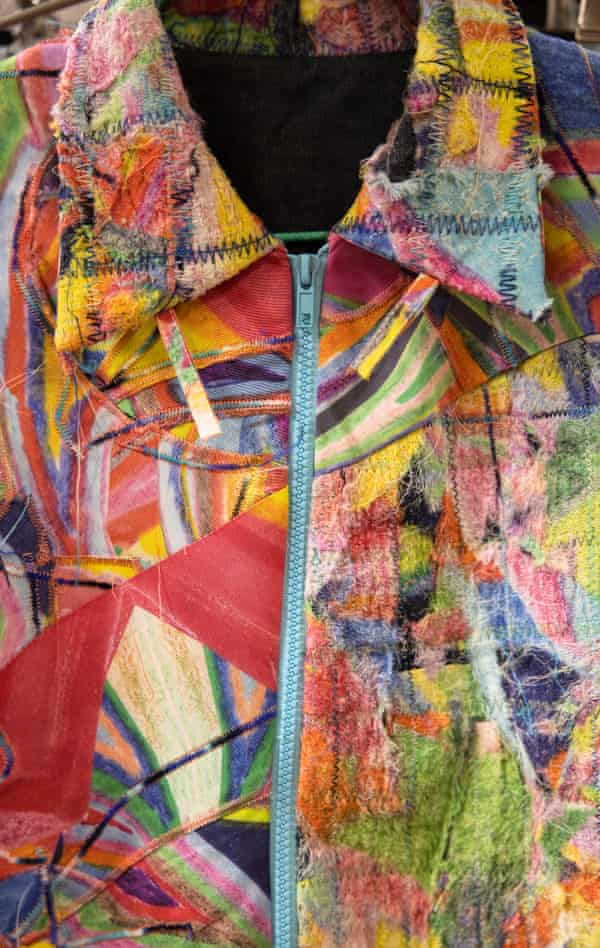
That big experiment paid off though. Last December, Gogos was given a workshop space at Sydney’s Powerhouse Museum as part of a partnership to deliver the museum’s first runway show, the beginnings of a $500m redevelopment plan to transform the Ultimo space into a design hub.
“I have had so many editors being like, ‘Nobody wears your stuff, and you’re getting all this attention,” Gogos says. “‘And you’re still taken as a proper brand in Australia. What is happening?’”
This year, Gogos has enlisted 56 collaborators, ranging from established international labels to collectives such as Yarrabah Arts and Cultural Precinct in tropical north Queensland, and emerging talents such as Julia Baldini, a local cobbler who is creating 27 pairs of handmade felted shoes.
This time, there’ll be some commerce in the mix: a collaboration with veteran Australian designer Jenny Kee featuring more conventional “wearables” including jeans, jackets and silk shirts. The public will be able to purchase these clothes, but the construction will still include recycled materials, including some remnants from Kee’s 2019 Powerhouse Museum exhibition with Linda Jackson.
Gogos is just one of a set of queer emerging Australian designers showing this fashion week. Melbourne designer Erik Yvon and Sydney’s Alix Higgins will both stage their first standalone runway shows at the event.
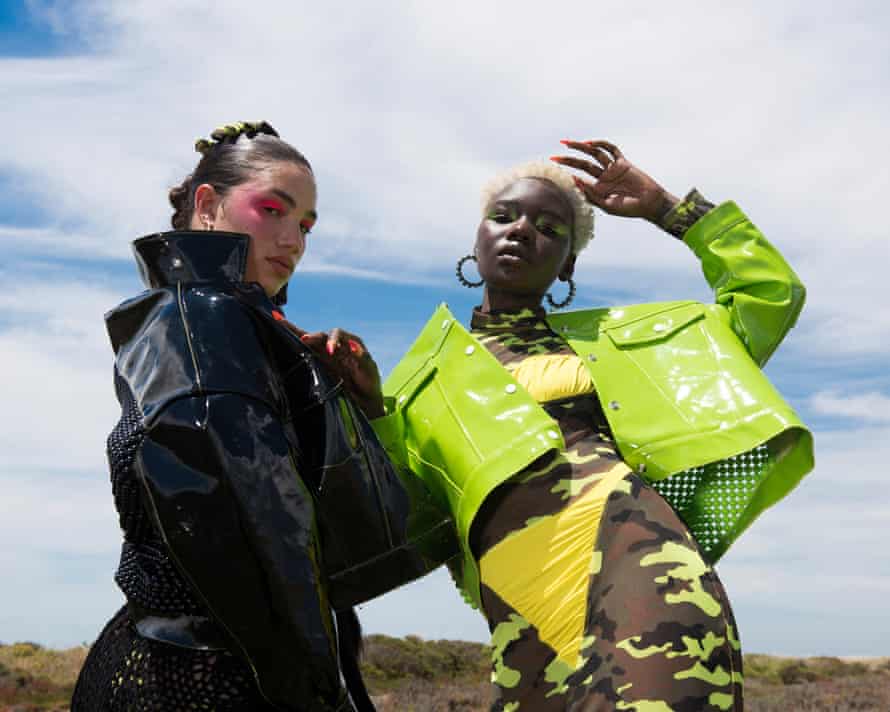
They also credit the pandemic with their current sense of momentum. Higgins, who collaborated with Gogos in 2021, created his label during lockdown (“I was bored and wanted attention and got it,” he jokes). Yvon has had his label since 2017, but noticed an uptick in interest since 2021’s long lockdowns. “We were all dragging,” he says. “It was really grim. My design, it’s all bright and bold and colourful … After Covid, I feel like people are a lot more receptive.”
While Yvon and Higgins’s labels are more traditional (ie commercial) than Gogos’s, their designs carry the same sense of exuberance and gaudiness, a queer sensibility that goes beyond genderless design (though all three do that too). Where Gogos brings a club kid mentality to his creative ethos, Yvon and Higgins have already found a home in the queer nightlife scenes of Sydney and Melbourne. It is rare to attend an event such as Sydney’s House of Mince, Loose Ends and Athletica or clubs like Melbourne’s Miscellania or Rainbow House without spotting their creations.
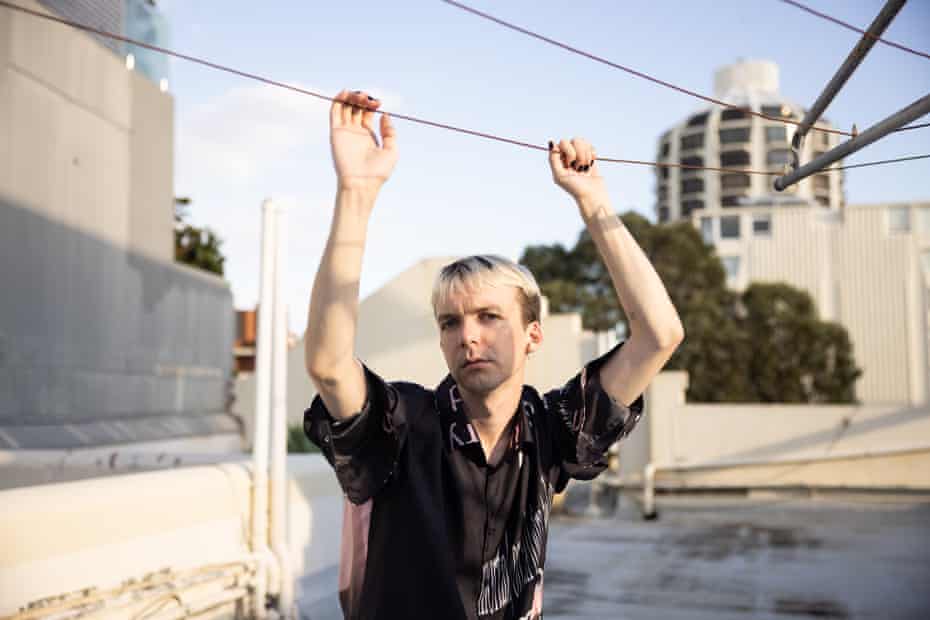
Inspired by his Mauritian heritage, Yvon’s beaded handbags, crochet jumpers and mesh-camo dresses exude “main character” energy. When describing the ideal place to wear his clothing, he imagines Rihanna lounging on a boat in the Caribbean. Rather than a “traditional catwalk”, he’s promising a “celebration”, working with Sydney ballroom figure Jack Huang to provide “an extra bit of character”. “I just want to make [the audience] feel happy, because that’s what the label is about,” he says.
But Yvon recognises there’s more at play than a need for happiness in terms of larger trends, noting that amid the bubbly, Y2K references there’s a harder, more “apocalyptic” mood.
“Everyone’s embracing the destroyed look,” Yvon muses. “We were confined – so all the [design] students used their own resources, what was around them.”
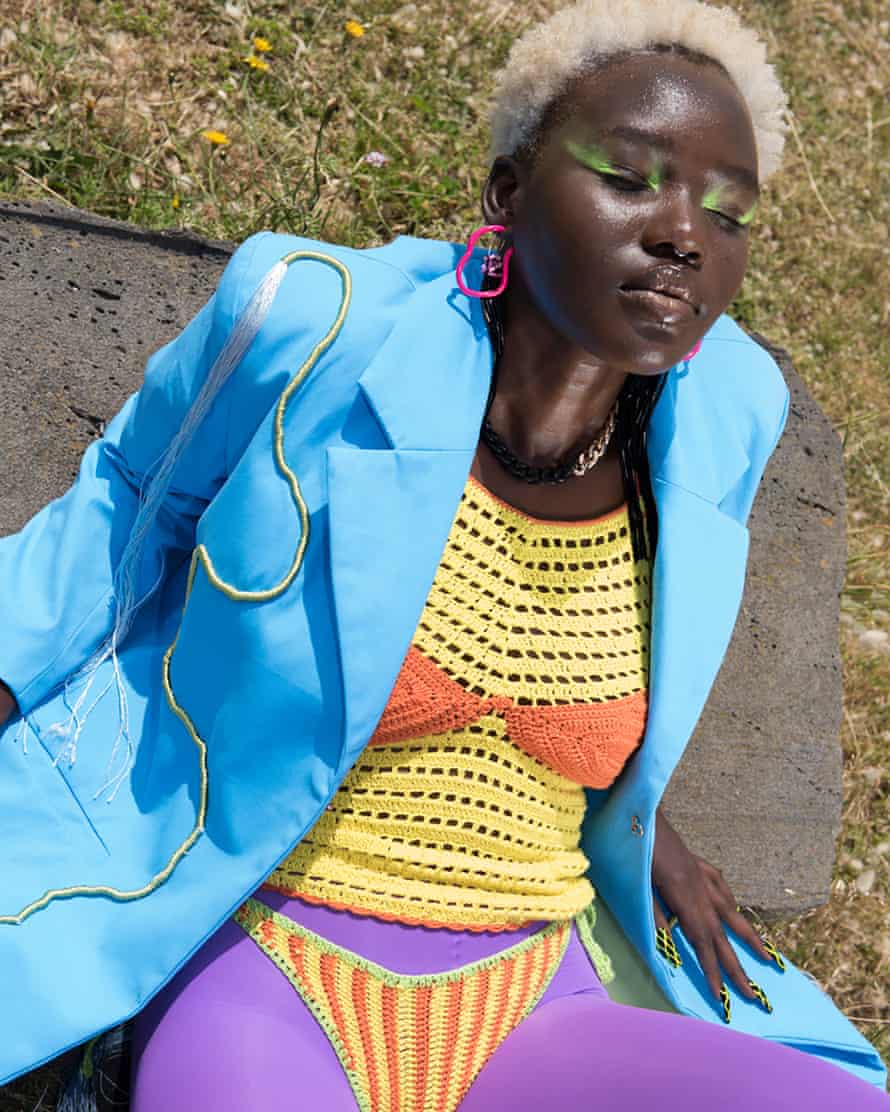
A glance through the racks at Sydney shop Distal Phalanx and Melbourne’s Error 404, boutiques known for stocking bleeding-edge emerging designers, illustrates Yvon’s point. From Yvon’s beaded handbags to fellow Melbourne label Maroske Peech’s tie-dye blouses and Wackie Ju’s G-strings with a flower at the back, the look is not so much a coherent trend as a DIY demand for attention.
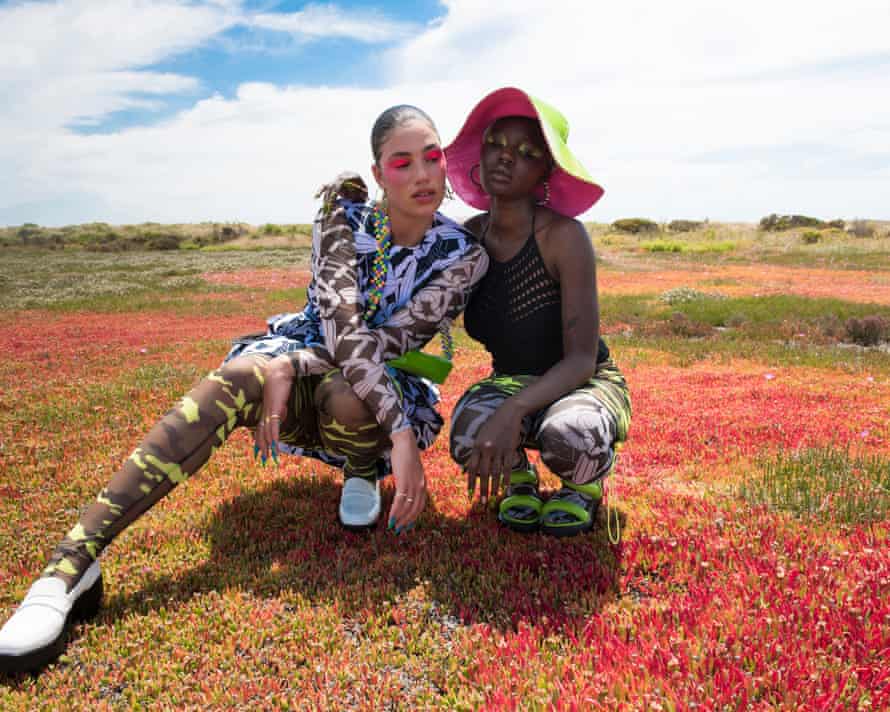
“There’s that term, post-lockdown hedonism,” says Error 404’s Anjelica Angwin. “There’s a real resurgence in club culture, fashion and design here in Melbourne because we can finally access it. I think that comes from a yearning to express the fact that we’re still alive and kicking … And in the club scene, in particular, there are a lot of people embracing their bodies. It’s really beautiful to see.”
Higgins’s work literally and figuratively embraces the body with skin-tight nylon shirts and shorts. His designs feature bold text printed over bright, barcode stripes, making them easy to spot on a dancefloor. With lines of poetry and phrases taken from Higgins’s diaries – such as “fairy type” or “baby i’m so scared” – it looks like a nihilist meme account made flesh. It’s emotionally indulgent, which is why Higgins was surprised to learn his customers mostly feel sexy in his clothes. “I think I’ve made myself that crazy girlfriend nobody wants – cause I’ve just rambled shitty poetry not only on the internet, but all over a wardrobe. It’s cringe, but it’s freeing.”
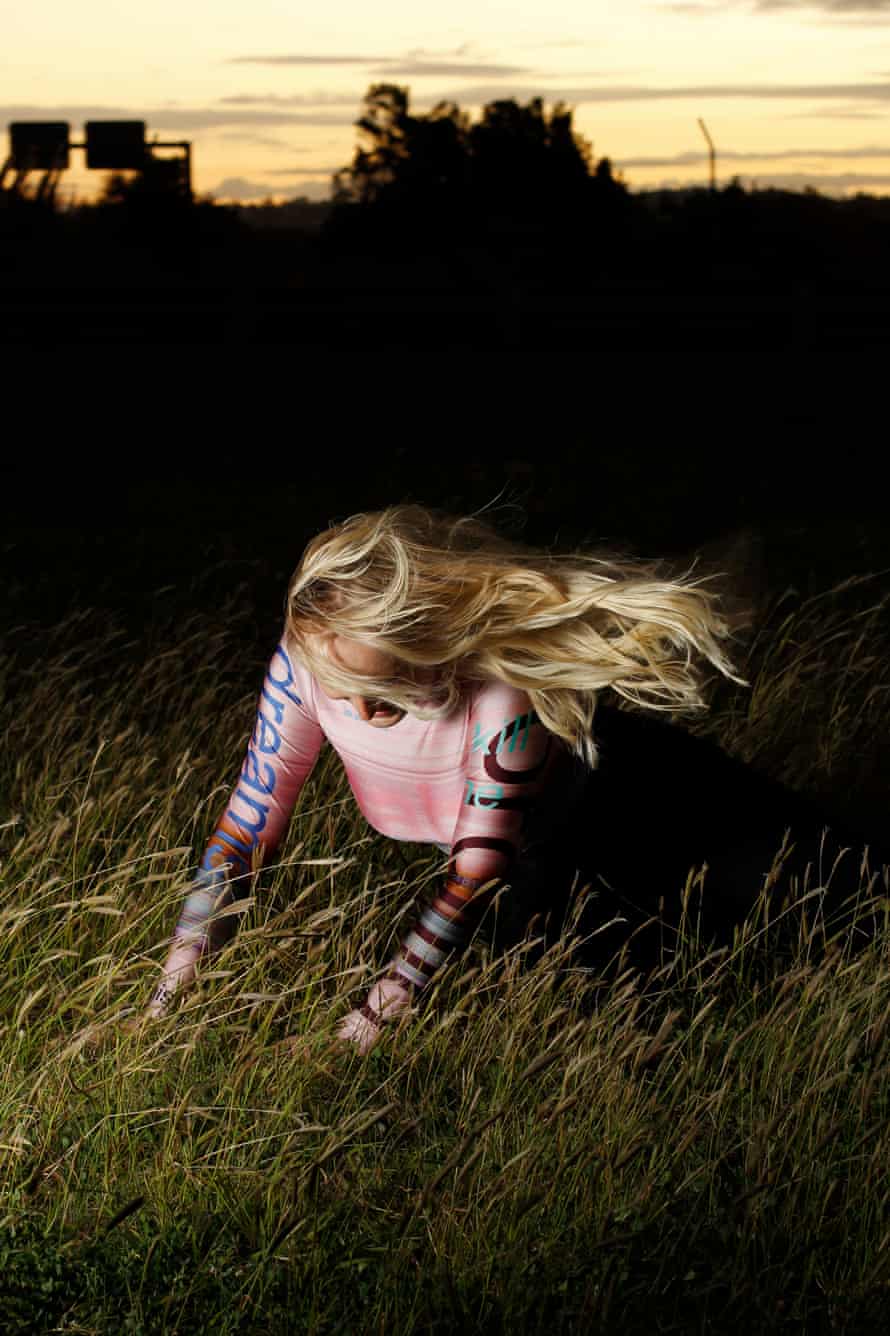
Higgins describes his upcoming collection as “even more unhinged”, due in part to the fact he created the 30-look collection predominantly alone in his studio apartment.
“I consider my work quite romantic and poetic, introspective, like an armour,” he says. He isn’t designing for nightclubs, “but I also think all of those things belong in a club.”
